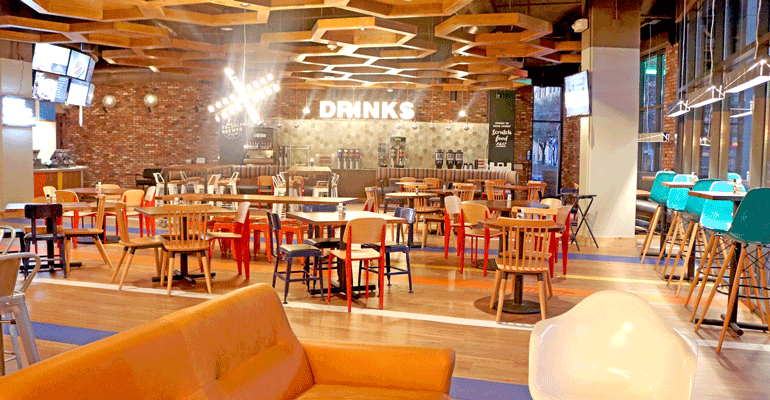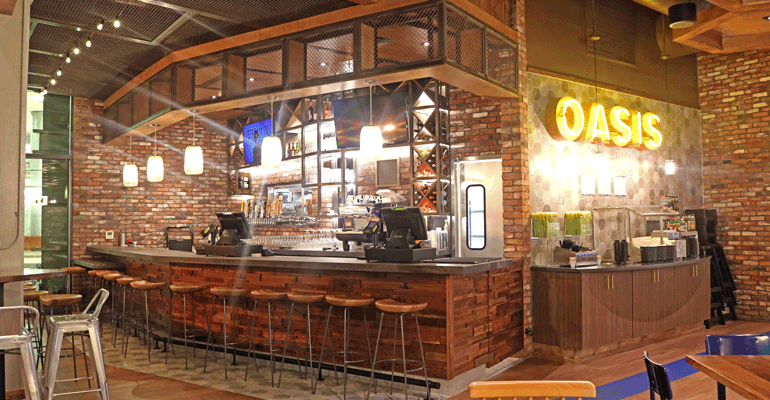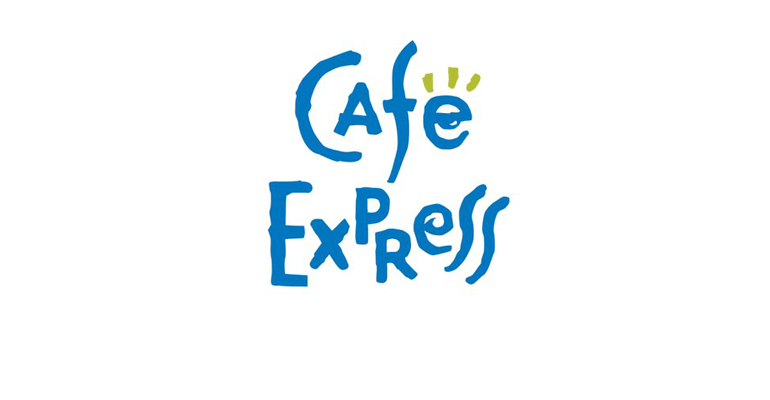
George Hailey is president and CEO of Cafe Express. This article does not necessarily reflect the opinions of the editors or management of Restaurant Hospitality.
The restaurant industry is constantly evolving thanks to the introduction of new concepts, changing consumer tastes, and menu and service innovations. Throughout my three-decade career in the industry, I have seen my fair share of restaurants come and go, and struggle to stay top of mind. Establishing the next best thing is not an easy feat, but I believe it is even more difficult to maintain a loyal following year after year.
I joined Cafe Express during a very exciting time for the brand. The restaurant had recently been purchased by an investment firm and was in the early stages of a full rebranding. This has been inspiring not only for me, but for the entire company, as we have just unveiled our very first restaurant featuring a new menu and completely revamped look. Throughout 2018 and 2019, Cafe Express restaurants will undergo remodeling one by one to fit within our company vision and reflect customer demographics in each location.
How can a restaurant brand distinguish itself in an ever-changing landscape? Here are five reasons why Cafe Express decided to rebrand as a way to stay top of mind with customers:
1. To tell our story.
Many Cafe Express customers are unaware of the brand’s rich history. The first location opened in Houston, in 1984, by Robert Del Grande and Lonnie Schiller, true pioneers of fast-casual dining. The restaurant’s food was prepared quickly in a less formal setting, while still remaining handcrafted and chef-inspired. Cafe Express’ made-from-scratch sides, entrees and desserts quickly caught on as operations remained ahead of its time. Today, there are 14 locations in Austin, Dallas and Houston.
For a restaurant brand to truly resonate with customers, it must provide more than just great food. Customers need to be educated on your story to be able to appreciate its foundation and the concept’s progression. Providing an opportunity for customers to engage with a brand and truly connect with its heritage fosters loyalty.

2. To become relevant.
The first Cafe Express restaurant opened more than 30 years ago. Since then, very few locations had been remodeled since they first opened. As all concepts do, the restaurants began to feel dated, failing to invite in a new set of customers and adjust to their needs. As a brand, we needed a way to become – and remain – a relevant choice for consumers.
How does a brand become relevant? By being different. By providing a product, service or experience so unique that consumers cannot find it anywhere else. Brands should first focus on understanding what customers truly want, and then begin innovating and adapting to that need. Customers will continue to dine with you if they can rely on the quality of your product.
3. To appeal more to Millennial and women consumers.
An important goal of the Cafe Express rebrand has been to attract more Millennial and women consumers. The reasons are clear: It’s estimated that Millennials in the U.S. have the most spending power of any generation, and women are the primary breadwinners in 40 percent of American households, controlling 51 percent of wealth and spending in most consumer goods categories.
But how do you attract these groups? From Instagram-worthy photo opportunities to enhanced bar offerings and impeccable service, the experience your consumer has with your brand stays with them long after they leave the restaurant. Being able to provide a unique experience for customers from the moment they walk in the door to the moment they are finished with their meal will set you apart from the competition.

4. To become more user-friendly.
Consumers dine out for two reasons: experience and ease. To enhance and create an elevated experience, the Cafe Express rebrand not only includes new décor, but also a completely new restaurant layout that is easier to navigate and streamlines traffic flow. In addition, Cafe Express introduced a condensed menu, which research found had previously distracted and overwhelmed customers with too many options.
The best thing you can do during a rebrand is to understand what your customer wants and adapt accordingly. To determine what customers want from your restaurant, look into working with a research firm to provide statistical data or conduct focus groups. This research will guide you through the changes and affirm the choices you make. Use the facts and not only your gut instinct.
5. To highlight the restaurant brand’s assets.
It’s important to know your strengths and make them clear to your customers. One major aspect of the Cafe Express rebrand was to highlight the restaurant’s unique qualities. For instance, Cafe Express’s made-from-scratch items are always fresh and flavorful. When customers visit the Cafe Express Oasis Table, they are able to customize any meal with 10 items that are made in-house or imported.
In addition to highlighting our current strengths, we also upgraded a few other components of the restaurant. Most notably, we’ve enhanced the Cafe Express bar offerings for customers who like to have an alcoholic beverage with their meals. This includes local craft beers and an extensive wine list.
Whether your restaurant has the best breakfast in town or a look made for Instagram, really hone in on what makes your brand different than the next. Play to your strengths and know what you want your customers to think and feel when they hear of your restaurant.
George Hailey is president and CEO of Cafe Express, a collection of 14 fast-casual restaurants in Texas serving made-from-scratch cuisine for breakfast, lunch and dinner. Hailey has more than three decades of experience in the restaurant industry. He received a Bachelor of Business Administration from Texas State University and is a CPA.





